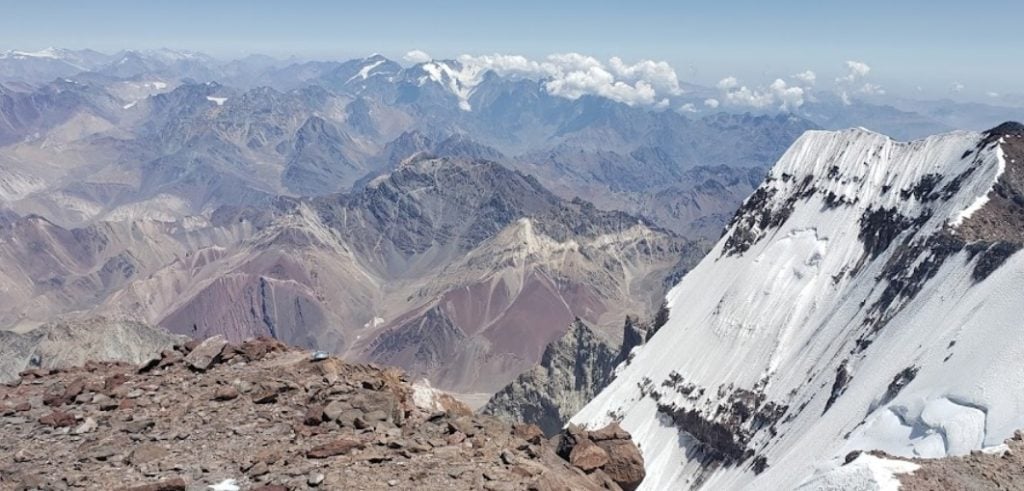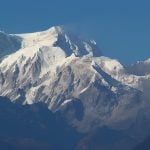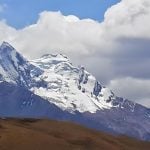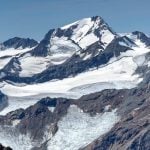Mount Aconcagua: The Roof of the Americas
Mount Aconcagua, located in the Andes mountain range of South America, is not only the highest peak in the Western and Southern Hemispheres but also one of the most iconic mountains in the world. Rising majestically to an elevation of 6,960.8 meters (22,837 feet) above sea level, this colossal massif offers a formidable challenge to mountaineers and a breathtaking spectacle to those who simply marvel at its grandeur from afar. In this extensive article, we will delve into the rich history, geography, geology, and the allure of Mount Aconcagua.
Geography and Location
Mount Aconcagua is situated in the heart of the Andes, which is the longest mountain range in the world, stretching for approximately 7,000 kilometers (4,350 miles) along the western edge of South America. The mountain is part of the Central Andes and is located in the Mendoza Province of Argentina, near the border with Chile. Its coordinates are approximately 32.6539° S latitude and 70.0111° W longitude.
Aconcagua’s proximity to the Pacific Ocean and its elevation contribute to the unique weather patterns in the region. The mountain’s location makes it an attractive destination for mountaineers and adventurers from around the world.
History and Name Origins
The history of Mount Aconcagua dates back centuries, with indigenous peoples inhabiting the surrounding regions long before the arrival of European settlers. The name “Aconcagua” itself has its roots in the Quechua language, spoken by the Incas and their descendants. It is believed to be a combination of “Ackon Cahuak,” which roughly translates to “Stone Sentinel.” The mountain has also been referred to as “Sentinel of Stone.”
During the Spanish colonization of South America, Aconcagua was known to explorers and settlers, and it played a significant role in their journeys through the Andes. In the early 19th century, expeditions began to document the mountain and its characteristics more thoroughly.
Geology and Formation
Mount Aconcagua is a part of the Andes mountain range, which itself is the result of tectonic plate interactions. The collision between the South American Plate and the Nazca Plate, which forms the boundary between the South American continent and the Pacific Ocean, has given rise to the Andes.
Aconcagua is primarily composed of sedimentary rock and metamorphic rocks, including schist and slate. Its formation can be traced back to the uplift caused by the subduction of the Nazca Plate beneath the South American Plate, leading to the creation of the high peaks in the Andes.
Climbing Mount Aconcagua
Climbing Mount Aconcagua is an ambition for many mountaineers, as it provides a significant challenge without the technical difficulties found in some of the world’s other highest peaks. However, the altitude and unpredictable weather conditions make it a formidable undertaking.
The most popular route to the summit is the Normal Route, which is approached from the Argentine side. This route is non-technical, but climbers must be well-acclimatized and prepared for the extreme altitude and changing weather conditions. Permits and regulations are in place to manage the number of climbers and ensure safety on the mountain.
Other routes to the summit include the Polish Glacier Traverse, the Vacas Valley Route, and the South Face Route, each presenting its own set of challenges and requiring different levels of technical expertise.
Challenges and Dangers
While Mount Aconcagua may not involve technical climbing, it presents its own set of challenges and dangers. The most significant of these is the extreme altitude. Acute Mountain Sickness (AMS), High Altitude Pulmonary Edema (HAPE), and High Altitude Cerebral Edema (HACE) are potential health risks that climbers must be aware of and prepared for. Proper acclimatization is crucial to minimize these risks.
Weather on Aconcagua can change rapidly and be extremely harsh, with severe cold, strong winds, and blizzards occurring even during the summer climbing season. The combination of high altitude and adverse weather conditions can make rescue operations difficult, adding to the inherent risks.
Records and Notable Ascents
Over the years, Mount Aconcagua has seen numerous successful ascents, as well as notable achievements and records. In 1897, Swiss climber Matthias Zurbriggen claimed the first recorded ascent. Since then, thousands of climbers from all over the world have stood on the summit.
One remarkable feat was accomplished by Karl Egloff in 2015 when he set a new speed record for the fastest ascent and descent of Aconcagua. He completed the round trip in just 11 hours and 52 minutes.
In 2019, Jordan Romero, a young American mountaineer, became the youngest person to complete the Seven Summits, which includes Aconcagua as one of its peaks, at the age of 15.
Conservation and Environmental Concerns
The popularity of Mount Aconcagua as a climbing destination has raised concerns about its environmental impact. Efforts have been made to promote responsible climbing and minimize the ecological footprint of climbers. Waste management, acclimatization, and leave-no-trace principles are emphasized to protect the fragile alpine ecosystems on the mountain.
Conclusion
Mount Aconcagua, often referred to as the “Roof of the Americas,” stands as a testament to the allure and challenge of high-altitude mountaineering. Its rich history, unique geography, and breathtaking beauty make it an iconic destination for adventurers and explorers. Climbing Aconcagua is not only a physical endeavor but also a mental and emotional journey, drawing individuals from all corners of the globe to test their limits and experience the world from its highest point in the Western Hemisphere. As we continue to explore and protect this natural wonder, Mount Aconcagua remains an enduring symbol of human determination and the majesty of the natural world.
Aconcagua: Frequently Asked Questions
1. Where is Mount Aconcagua located?
It is located on the border of Argentina and Chile.
2. What is the elevation of Mount Aconcagua?
It is 6,961 meters (22,838 feet) high.
3. Which mountain range does Mount Aconcagua belong to?
It belongs to the Andes mountain range.
4. What does the name Mount Aconcagua mean?
It means “stone sentinel” in the Quechua language.
5. Who first climbed Mount Aconcagua?
Swiss mountaineers Matthias Zurbriggen and Stuart Vines reached the summit in 1897.
6. Is it difficult to climb Mount Aconcagua?
Yes, it is a challenging climb even for experienced mountaineers.
7. How long does it take to climb Mount Aconcagua?
It takes approximately 15-20 days.
8. What dangers can be encountered while climbing Mount Aconcagua?
There are dangers such as altitude sickness, hypothermia, avalanches, and rockfall.
9. When is the best time to climb Mount Aconcagua?
The best time is between December and March.
10. Do you need a permit to climb Mount Aconcagua?
Yes, you need to obtain a permit from the Argentine National Parks Administration.
11. What flora and fauna can be found on Mount Aconcagua?
It is home to various lichens, mosses, and grasses. It also supports animals such as pumas, guanacos, and condors.
12. What are some interesting facts about Mount Aconcagua?
It is the highest mountain outside of the Himalayas.
It is the highest mountain in South America.
The atmosphere at the summit is so thin that it contains only 33% of the oxygen at sea level.
It is one of the driest mountains in the world.





